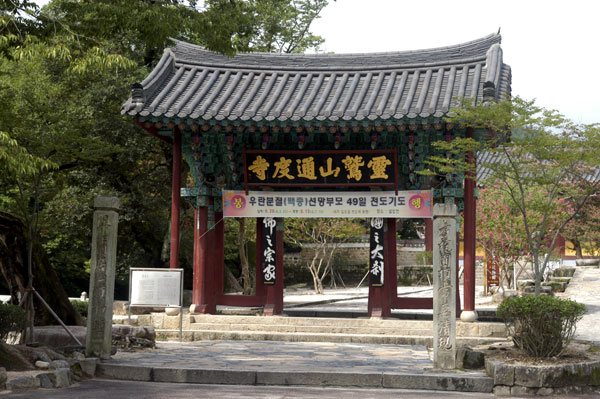Bulbo Temple, one of the top three temples in Korea


Located in Yangsan-si, Gyeongsangnam-do, Tongdosa Temple is one of the three treasured temples in Korea along with Haeinsa Temple in Hapcheon and Songgwangsa Temple in Suncheon. It is a Buddhist temple built in 646 during the reign of Queen Seondeok of Silla by Jajang Yulsa to store the Buddha’s ashes brought from the Tang Dynasty in China and the lyrics used by the Buddha Sakyamuni.
It was destroyed by the Japanese Invasion of Korea in 1592, but was rebuilt in 1601, and after a large-scale renovation in 1641, it is now composed of 35 temples and has become one of the largest temples in Korea. Since Tongdosa Temple is a temple dedicated to the Buddha’s Jinsinsari, the main Buddha is not enshrined in Daeungjeon Hall. The Sari Pagoda, which houses the Bulsari, is located behind Daeungjeon Hall and is worshiping the Bulsari Tower through an indoor window instead of the Daeungjeon Buddha statue.
Near the temple entrance and Seongbo Museum




Tongdosa Temple Iljumun Gate, Samsung Banwolgyo Bridge, and Open Air Museum




Cheonwangmun Statue of Four Heavenly Kings and Beopgo and wooden fish hanging from Beomjongru




Geuknakjeon and murals painted on the walls of Geuknakjeon






Devotees are worshiping at Yeongsanjeon Hall, the three-story stone pagoda in front, and Yaksajeon Hall on the left.



The Daeungjeon Hall can be seen beyond the Buli Gate, the last gateway to the Buddha’s world of enlightenment. When you go out of Bulimun, there is Gwaneumjeon on the right.




Tongdosa Temple Daeungjeon (Geumgang Stairs)
There is no statue of Buddha in Daeungjeon, and the stupa of Buddha is the object of worship.


The stupa of the Buddha is located in the direction of the Buddha statue in Daeungjeon, so it is an object of worship.




Guryongji pool, where the founding story of Tongdosa Temple is transmitted, Myungbu, which rules the afterlife, and Eungjinjeon Hall, where 16 disciples of the Buddha are enshrined.



| Basic information | |
|---|---|
| Name | Tongdosa Temple 통도사 通度寺 |
| Address | 583, Jisan-ri, Habuk-myeon, Yangsan-si, Gyeongsangnam-do 경상남도 양산시 하북면 지산리 583번지 |
| Telephone | 055-382-7182 |
| Admission Fees | Free Seongbo Museum is 2,000 won for adults |
| Site | http://www.tongdosa.or.kr/kor/index.php |

Comments